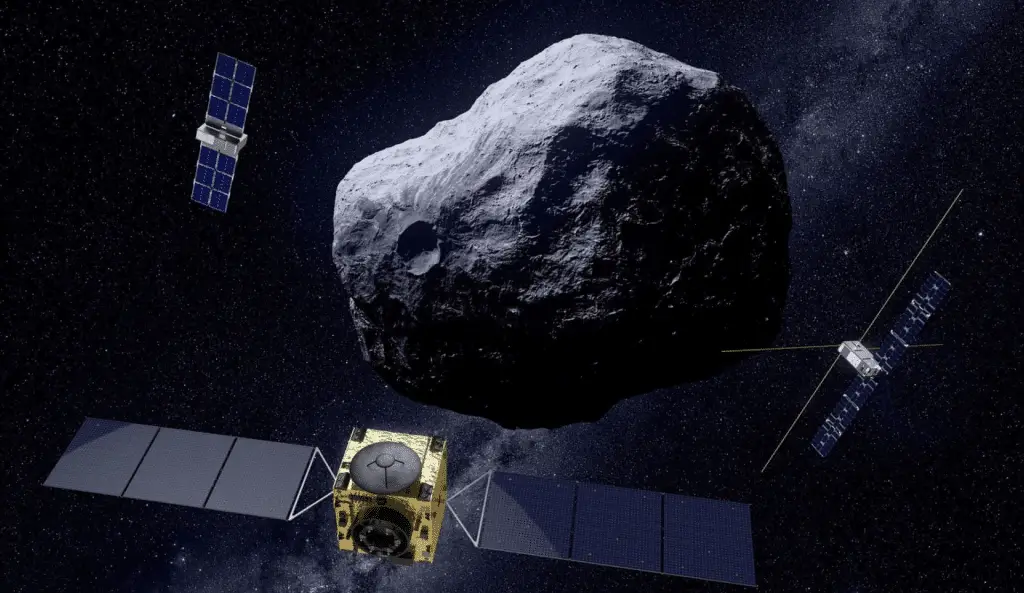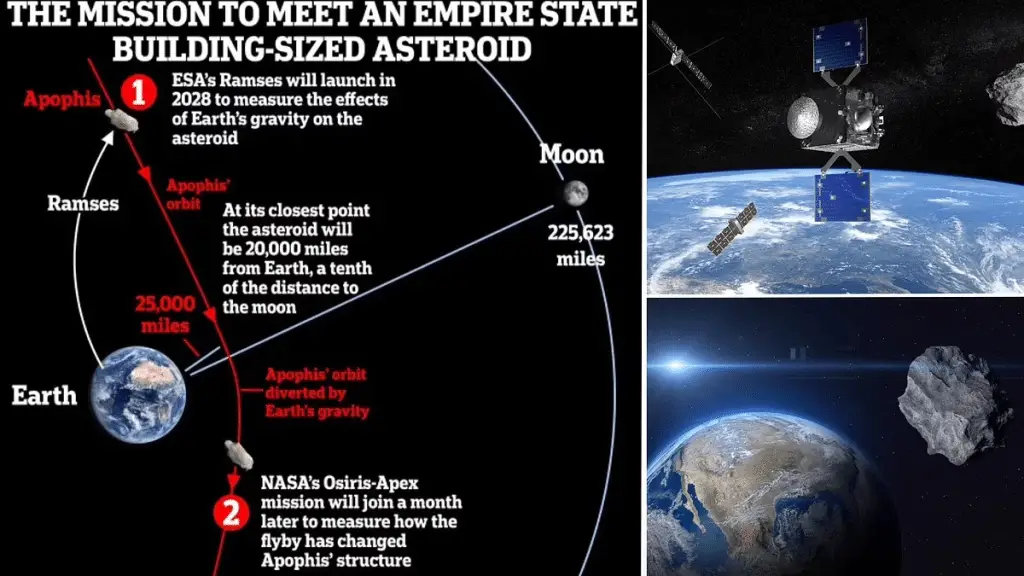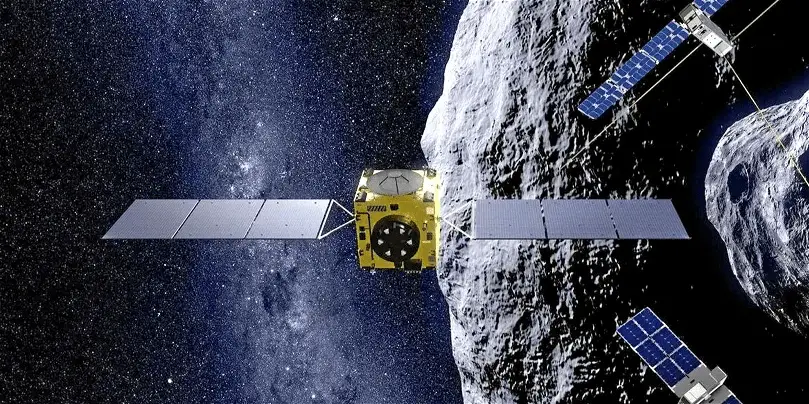On April 13, 2029, theasteroid 99942 Apophis will make a close pass to Earth, coming within less than 32,000 kilometers from the surface of our planet. This event represents a unique opportunity for science and planetary defense, and theEuropean Space Agency (ESA) has planned an ambitious mission to make the most of this opportunity: the Ramses mission (Rapid Apophis Mission for Space Safety).
Interest in planetary defense has grown significantly in recent decades, particularly after the impact of the Comet Shoemaker-Levy 9 on Jupiter in 1994, an event that demonstrated the destructive power of celestial objects and raised the crucial question: “What can we do to prevent a similar event on Earth?”
The Ramses mission represents a step forward in answering this questionallowing scientists to closely study an asteroid as it interacts with Earth’s gravity.
The Asteroid Apophis and the Ramses mission
Apophis, with a diameter of about 375 meters, is one of the size of a large cruise shipamong other things its trajectory will take it to an extremely close distance to Earth, an event that occurs only once in a 5,000-10,000 years.
During its passage, Apophis will be visible to the naked eye to about two billion people in Europe, Africa and parts of Asia, and although astronomers have excluding the possibility of a collision with Earth for at least the next 100 years, the passage of Apophis offers an unprecedented opportunity to observe and study an asteroid under unique conditions.
The Ramses mission involves the launch of a space probe that will rendezvous with Apophis before its close approach to Earth and will accompany him throughout the entire eventthis is because scientists hope to observe how the Earth’s gravity will affect the physical characteristics of the asteroidallowing us to collect valuable data that could improve our ability to defend the planet from similar objects in the future.

Patrick Michel, Director of Research at the CNRS at the Côte d’Azur Observatorystressed the importance of this mission, stating:
“For the first time, nature has brought us an asteroid and conducted the experiment on its own. All we need to do is observe how Apophis is deformed and changed by strong tidal forces, which could trigger landslides and other disturbances, revealing new material beneath the surface.”
Preparations and timing
To ensure the success of the mission, the Ramses probe will have to be Launched April 2028allowing it to arrive at Apophis in February 2029, two months before the close flyby; this Timing is crucial to allow scientists to properly prepare and maximize observations during the event.
ESA’s Ramses mission will be equipped with a suite of advanced instruments to study the asteroid Apophis, including spectrometers to analyze the chemical composition of the surface, radar to penetrate beneath the surface and high resolution cameras to capture detailed images of the asteroid.
These instruments will allow scientists to gain a deep understanding of the internal structure and composition of Apophis, information crucial for planetary defense.

Observations and analysis
One of the main goals of the Ramses mission is to observe how Earth’s gravity will affect Apophis during its close passage, specifically scientists predict that tidal forces could cause landslides and other disturbances on the asteroid’s surface, revealing material that has never been exposed before.
This phenomenon will provide a unique opportunity to study the internal composition of Apophis and better understand the formation and evolution of asteroids.
Of course, the Ramses mission will not be a solitary undertaking, theESA will collaborate with other space agencies and research institutes around the world To maximize the scientific value of the mission, this international collaboration will allow for the sharing of data and resources, improving our collective understanding of asteroids and planetary defense techniques.
The data collected by the Ramses mission will also have significant implications for the future of planetary defenseunderstanding how asteroids respond to tidal forces will help us develop more effective strategies to deflect or destroy potentially dangerous objects in the future.
In addition to the above, the mission will increase public awareness of the importance of planetary defense and may inspire further investment in this crucial field.

Preparations for the Ramses mission are already underwaywith engineers and scientists working to ensure the probe is ready for launch in 2028, however there are many challenges to faceincluding the need for develop new technologies and ensure that all systems function perfectly during the mission.
Despite these challenges, ESA is confident that the Ramses mission will be a success and will provide invaluable data for science and planetary safety.
If you are attracted by science or technology, keep following us, so you don’t miss the latest news and updates from around the world!
#Ramses #Mission #Time #Apophis

